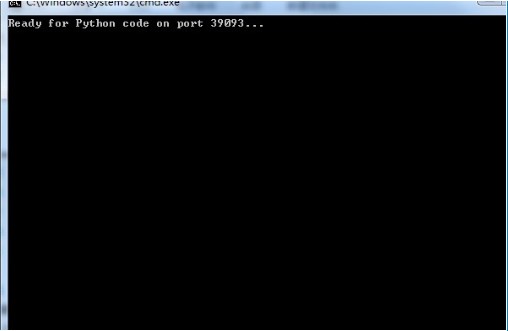How to use code running assistant in python
Python code running assistant is a tool that can run python language on web pages. Because the running environment of python uses DOS in many tutorials, the dark interface looks a bit crude, so this python code running assistant is released as an ide.
In fact, the python code running assistant interface can only be considered as a passing score. If you are looking for an ide, jupyter is recommended. Jupyter is integrated into ANACONDA and can be used as long as anacoda is installed.
1、 To open this running assistant, first download a learning.py. If you can’t find it, you can copy the following code and save it as “learning.py”. Use sublime or notepad++ as the editor.
#! /usr/bin/envpython3
#- *- coding:utf-8-*-
r'''
learning.py
APython3tutorialfromhttp://www.liaoxuefeng.com
Usage:
python3learning.py
'''
importsys
defcheck_version():
v=sys.version_info
ifv.major==3andv.minor =4:
returnTrue
print('Yourcurrentpythonis%d.%d.PleaseusePython3.4.'%(v.major,v.minor))
returnFalse
ifnotcheck_version():exit(1)
importos,io,json,subprocess,tempfile
fromurllibimportparse
fromwsgiref.simple_serverimportmake_server
EXEC=sys.executable
PORT=39093
HOST='local.liaoxuefeng.com:%d'%PORT
TEMP=tempfile.mkdtemp(suffix='_py',prefix='learn_python_')
INDEX=0defmain():
httpd=make_server('127.0.0.1',PORT,application)print('ReadyforPythoncodeonport%d...'%PORT)
httpd.serve_forever()defget_name():
globalINDEX
INDEX=INDEX+1return'test_%d'%INDEX
defwrite_py(name,code):
fpath=os.path.join(TEMP,'%s.py'%name)withopen(fpath,'w',encoding='utf-8')asf:
f.write(code)print('Codewroteto:%s'%fpath)
returnfpath
defdecode(s):try:
returns.decode('utf-8')
exceptUnicodeDecodeError:
returns.decode('gbk')defapplication(environ,start_response):
host=environ.get('HTTP_HOST')
method=environ.get('REQUEST_METHOD')
path=environ.get('PATH_INFO')
ifmethod=='GET'andpath=='/':start_response('200OK',[('Content-Type','text/html')])return[b'<html <head <title LearningPython</title </head <body <formmethod="post"action="/run"<textareaname="code"style="width:90%;height:600px"</textarea <p <buttontype="submit" Run</button
< /p </form </body </html ']
ifmethod=='GET'andpath=='/env':start_response('200OK',[('Content-Type','text/html')])
L=[b'<html <head <title ENV</title </head <body ']
fork,vinenviron.items():
p='<p %s=%s'%(k,str(v))
L.append(p.encode('utf-8'))
L.append(b'</html ')
returnL
ifhost!=HOSTormethod!='POST'orpath!='/run'ornotenviron.get('CONTENT_TYPE','').lower().startswith('application/x-www-form-urlencoded'):start_response('400BadRequest',[('Content-Type','application/json')])return[b'{"error":"bad_request"}']
s=environ['wsgi.input'].read(int(environ['CONTENT_LENGTH']))
qs=parse.parse_qs(s.decode('utf-8'))
ifnot'code'inqs:start_response('400BadRequest',[('Content-Type','application/json')])return[b'{"error":"invalid_params"}']
name=qs['name'][0]if'name'inqselseget_name()
code=qs['code'][0]
headers=[('Content-Type','application/json')]
origin=environ.get('HTTP_ORIGIN','')
iforigin.find('.liaoxuefeng.com')==-1:start_response('400BadRequest',[('Content-Type','application/json')])return[b'{"error":"invalid_origin"}']
headers.append(('Access-Control-Allow-Origin',origin))start_response('200OK',headers)
r=dict()try:
fpath=write_py(name,code)print('Execute:%s%s'%(EXEC,fpath))
r['output']=decode(subprocess.check_output([EXEC,fpath],stderr=subprocess.STDOUT,timeout=5))
exceptsubprocess.CalledProcessErrorase:
r=dict(error='Exception',output=decode(e.output))
exceptsubprocess.TimeoutExpiredase:
r=dict(error='Timeout',output='Execution timeout')
exceptsubprocess.CalledProcessErrorase:
r=dict(error='Error',output='Execution error')print('Executedone.')return[json.dumps(r).encode('utf-8')]
if__name__=='__main__':main()
2、 Use a notepad to write the following code:
@ echooff
pythonlearning.py
pause
Save as'Run.bat'
3、 Put "run.bat" and "learning.py" in the same directory.

4、 Double-click to run "Run.bat", and then a black dos window will pop up. Do not close this window.

5、 Enter the URL and port corresponding to the URL, and the whole process is complete.

Knowledge point expansion:
Python online code assistant
#! /usr/bin/env python3
# - *- coding: utf-8-*-
r'''
learning.py
A Python 3 tutorial from http://www.liaoxuefeng.com
Usage:
python3 learning.py
'''
import sys
def check_version():
v = sys.version_info
if v.major ==3 and v.minor =4:return True
print('Your current python is %d.%d. Please use Python 3.4.'%(v.major,v.minor))return False
if not check_version():exit(1)import os,io,json,subprocess,tempfile
from urllib import parse
from wsgiref.simple_server import make_server
EXEC = sys.executable
PORT =39093
HOST ='local.liaoxuefeng.com:%d'% PORT
TEMP = tempfile.mkdtemp(suffix='_py',prefix='learn_python_')
INDEX =0
def main():
httpd =make_server('127.0.0.1',PORT,application)print('Ready for Python code on port %d...'% PORT)
httpd.serve_forever()
def get_name():
global INDEX
INDEX = INDEX +1return'test_%d'% INDEX
def write_py(name,code):
fpath = os.path.join(TEMP,'%s.py'% name)withopen(fpath,'w',encoding='utf-8')as f:
f.write(code)print('Code wrote to: %s'% fpath)return fpath
def decode(s):try:return s.decode('utf-8')
except UnicodeDecodeError:return s.decode('gbk')
def application(environ,start_response):
host = environ.get('HTTP_HOST')
method = environ.get('REQUEST_METHOD')
path = environ.get('PATH_INFO')if method =='GET' and path =='/':start_response('200 OK',[('Content-Type','text/html')])return[b'<html <head <title Learning Python</title </head <body <form method="post" action="/run" <textarea name="code" style="width:90%;height: 600px" </textarea <p <button type="submit" Run</button </p </form </body </html ']if method =='GET' and path =='/env':start_response('200 OK','text/html')])
L =[b'<html <head <title ENV</title </head <body ']for k,v in environ.items():
p ='<p %s = %s'%(k,str(v))
L.append(p.encode('utf-8'))
L.append(b'</html ')return L
if host != HOST or method !='POST' or path !='/run' or not environ.get('CONTENT_TYPE','').lower().startswith('application/x-www-form-urlencoded'):start_response('400 Bad Request','application/json')])return[b'{"error":"bad_request"}']
s = environ['wsgi.input'].read(int(environ['CONTENT_LENGTH']))
qs = parse.parse_qs(s.decode('utf-8'))if not 'code'in qs:start_response('400 Bad Request','application/json')])return[b'{"error":"invalid_params"}']
name = qs['name'][0]if'name'in qs elseget_name()
code = qs['code'][0]
headers =[('Content-Type','application/json')]
origin = environ.get('HTTP_ORIGIN','')if origin.find('.liaoxuefeng.com')==-1:start_response('400 Bad Request','application/json')])return[b'{"error":"invalid_origin"}']
headers.append(('Access-Control-Allow-Origin',origin))start_response('200 OK',headers)
r =dict()try:
fpath =write_py(name,code)print('Execute: %s %s'%(EXEC,fpath))
r['output']=decode(subprocess.check_output([EXEC,fpath],stderr=subprocess.STDOUT,timeout=5))
except subprocess.CalledProcessError as e:
r =dict(error='Exception',output=decode(e.output))
except subprocess.TimeoutExpired as e:
r =dict(error='Timeout',output='Execution timeout')
except subprocess.CalledProcessError as e:
r =dict(error='Error',output='Execution error')print('Execute done.')return[json.dumps(r).encode('utf-8')]if __name__ =='__main__':main()
So far this article on how to use the code running assistant for python is introduced. For more related Python code running assistant usage content, please search for the previous articles of ZaLou.Cn or continue to browse the related articles below. Hope you will support ZaLou more in the future. Cn!
Recommended Posts